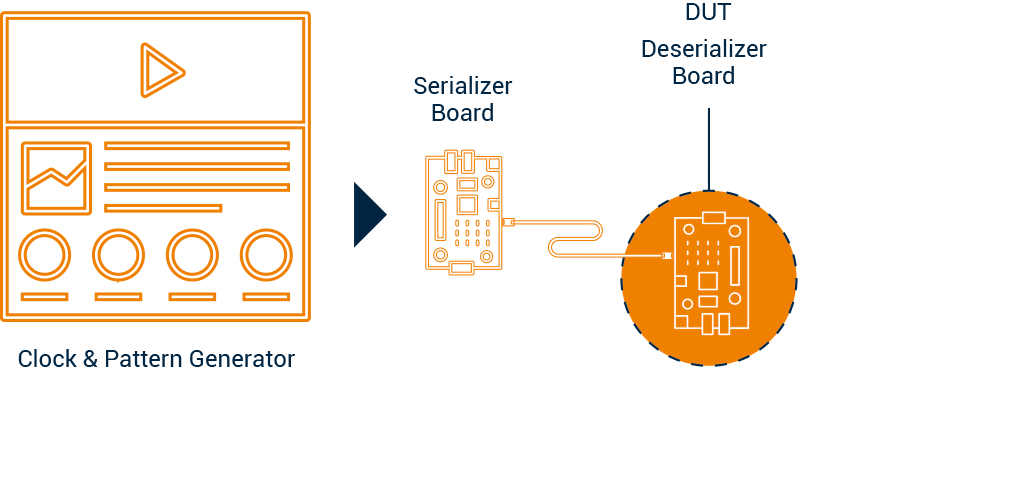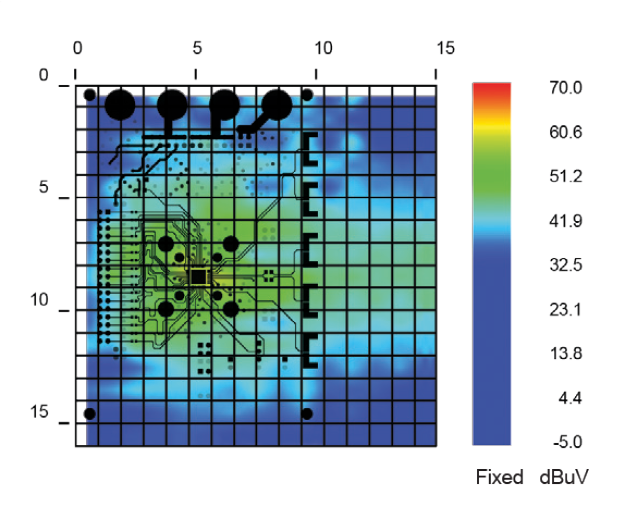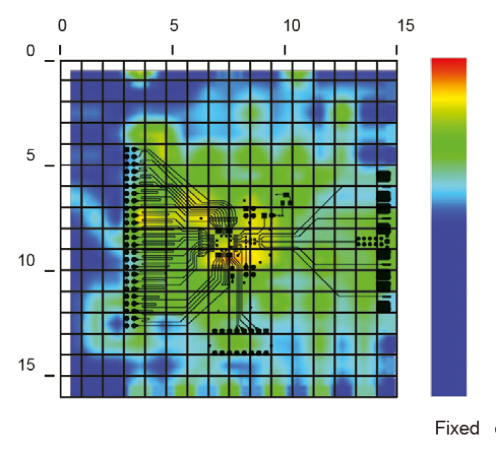Case Study - SERDES
EMI Near-Field Emissions Profiles: Reducing Time-to-Market
Background:
A major semiconductor manufacturer had already developed a point-to-point solution (halfduplex) between Serializer/Deserializer (SerDes) devices. In the next generation, the SerDes interface was upgraded by embedding a bidirectional control channel together onto the highspeed serial link for a two-way transmission (full-duplex).

Baseline results – SERDES in half-duplex mode

Emissions profile – SERDES in full-duplex mode
Research Objectives:
Quantify the EMI emissions profile by comparing the half-duplex deserializer to the next-generation full-duplex design. Determine whether the full-duplex design impacts the EMI profile and if so, quantify the difference.
Test Method:
The design team utilized the on-site EMxpert near-field EMI scanner. They placed the original half-duplex board on the scanner to generate a baseline measurement. After connecting power to the device under test (DUT), they activated the scan on a PC. (Fig. 1)
Fig 1 Test Setup for EMI Scan

Test Results:
The EMxpert system generates and displays emissions profiles in real-time and includes both spatial and spectral results. The profile of the baseline system appears in
Fig. 2 Baseline results SERDES in half-duplex mode.


By comparison, note the emissions scan for the full-duplex scan in Fig. 3.
Fig.3 Emissions profile SERDES in full-duplex mode


Conclusions:
The team carefully compared the spatial and spectral scan results. They observed no spikes, very similar peak emissions, and a slightly better EMI profile (more blue in the spatial scan) in full-duplex mode than the baseline. By quantifying that no appreciable change occurred in full-duplex mode, (Fig. 3) the team implemented the fullduplex feature with no additional mitigation measures.
The design team conducted the scans on the EMxpert system in their offices. In a matter of minutes, they obtained the results shown above. Because the emissions profile clearly demonstrated a superior emissions profile, the design required no additional mitigation. To test the new design in a third party chamber would have required that an engineer travel to an off-site test facility for the better part of a day. Access to a chamber could have been weeks away.
SCANNER USERS

Testimonials
The instrument provides spatial and spectral scans that allow design teams to cut one to two design cycles out of their product development process. It also reduces their EMI testing time by up to two orders of magnitude.
The design team conducted the scans on the EMxpert system in their offices. In a matter of minutes, they obtained the results. Testing the design in a third party chamber would have have been weeks away
